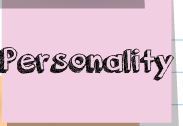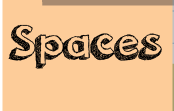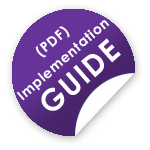Susie as Role Model
When we first conceptualized Susie as an online avatar in 2009, the student body at the Universty of Houston-Clear Lake (UHCL) was different demographically than it is today. For most of its 40-year history, UHCL has served transfer students entering as juniors or seniors to complete bachelor’s degrees. These same students often stayed on to earn master’s degrees. The majority were Caucasian women in their late 20s and early 30s, returning to finish degrees interrupted by childbearing and family responsibilities (UHCL Office of Institutional Research, 2013). Depending on the amount of time they had been out of college, these students were at best ambivalent and at worst very apprehensive about what they were doing. They lacked confidence in their academic preparation and abilities. They often lacked familiarity with the technology they now had access to. Susie was created as a role model for these students. She was energetic and confident, a late twenties-ish student who had successfully made the transition back to college and who could guide our returning students to success in this new world whose doors they had entered with trepidation. By adding in some anime features, we also hoped to evoke some of the multi-cultural aspects of our growing international student population.
A Changing Demographic
By spring 2013, however, our fast-growing population of Hispanic students reached 25.5%, meeting the criteria for us to be designated as a Hispanic Serving Institution (UHCL Office of Institutional Research, 2013). Today, 33% of our semester credit hours are attributed to Hispanic students and 28% of our overall female population is Latina (UHCL “Updates Presentation: Provost’s Report,” 2014; UHCL “Facts at a Glance: Ethnicity by Gender,” 2014). Clearly, Susie needed to adapt so she would continue to represent the student body we now proudly serve. The challenge was how to do this. We currently have about a dozen different images of Susie published in print publications, on our website, and on her Facebook page. She has a great deal of recognition on campus (and off), and it would be difficult to change the way she looks without a considerable amount of work.
Multiracial Identity
But was there another way to accomplish our goal of adding diversity? As I considered this question in the fall of 2014, I found inspiration in my first group of freshmen and sophomores enrolled in Composition II. We were exploring the theme of immigration, and began with personal immigration stories. Texas culture represents a rich mix of races and ethnicities, which my students generously addressed in personal narratives tracing their families' histories in the state.
One student in particular, Madison Coates, wrote poignantly about how she has learned to celebrate her multiracial identity. She described her fourth grade encounter with a scantron question about race:
I stared in disbelief at my scantron at the race and ethnicity portion. . . . I didn’t understand what I was supposed to circle in for this particular block. Was I Mexican? Asian? White? Could I possibly be African American and not even know it? What was I? Who was I? People said I looked like I could be from Hawaii so maybe I was a Pacific Islander. They had to be right. Right? They were the adults and knew when it was time to go to lunch and what day we had art. As I quietly contemplated my entire existences I circled in the only thing I felt like in that moment: Other.
Madison then explained her dilemma by telling the story of her U.S.-born grandfather who joined the Navy and fell in love with her Japanese grandmother. Her Asian/White father then fell in love with her Mexican/Native American/Spanish mother. Ultimately, they formed a family. In Madison’s words, “[w]e are a family dedicated to each other every single day, year after year.”
In her narrative, Madison used her writing experience to explain how she integrated her “existences” and came to a balanced perspective about who she is:
Needless to say, I don’t circle other anymore. I know who I am, where I come from, and what time lunch is served, so a small portion of my worries are taken care of. I could be from Japan or from America but at the end of the day I am human just like the next person and I think that is all that really matters in life.
Unfortunately, achieving this level of personal integrity is not always an easy journey, as Aurora Chang (2014) pointed out in her discussion of her experience as a student with a multiracial identity: “My racial mixture triggered an assortment of reactions from others, laden with stereotypes and accompanying academic expectations” (p. 26). She explains that students with what she calls multiracial identities can be seen as misfits, people who live outside the borders, but that this designation can also create a space of opportunity or agency:
Becoming multiracial, a racial atravesado/a (literal translation: one who crosses over) involves a complex process of identity production which is important to understand, especially as it relates to being a student. Atravesados/as, in its Spanish meaning, refers to people who are irreverently bold, crossing the lines of social normativity, making others feel uncomfortable, even slighted. However, this term also possesses an element of unapologetic courageousness, referring to a person who dares to live outside normative parameters and to be different (Chang, 2014, p. 27).
Re-imagining Susie
Could Susie, already positioned as a character who defies boundaries, who invites writers into new and unexplored territories, also be repositioned as a representative of the many students with multiracial identities who choose to study at UHCL? Could Susie help our students to celebrate their multiple perspectives, just as she previously helped our tentative returning students to recognize and value the life experiences they brought with them to the University?
To answer this question, who better to ask than my students, representatives from the first freshman class at UHCL, with a demographic closely resembling that of our newest group? (Of 16 students, 25% have a multiracial background and 38% claim a Latino/a heritage; 44% are male and 56% are female.)
I put several questions to a group of ten students enrolled in my fall 2014 Composition II course, and here are their responses:
When asked what they thought Susie’s race/ethnicity was, 60% described her as White/Asian because of her anime style and 40% described her as European or Caucasian.
When asked what they thought about revising Susie as a multiracial persona, all ten students approved, citing as benefits a better means of creating a connection between her and our students, and making her a better representative of the UHCL community:
“Giving Susie a mix of cultures will broaden her appeal; many people identify as mixed race. Any two mixes of race will broaden her appeal because not a lot of people identify with just one race.”
“I think it would be great because people would read into her background and they would probably find a connection to Susie.”
The students also discussed the fact that Susie did not necessarily have to be Latina to accomplish this goal. One thought that her anime style already positioned her as multiracial:
“I don’t think it’s necessary to make her directly white and Latina. . . . If anything she’s Japanese/White already.”
Two more thought she should represent even more ethnicities:
“I think a multi-racial identity would be good, though I think it would be good to branch out into a truly multi-racial identity. Don’t just stop at Hispanic.”
“Making Susie multi-racial is a good idea, however, perhaps a third race would be a good addition.”
When asked if making this change would be believable, students agreed that race does not always show in obvious ways:
“I think that’s a great idea! It works because there are many Hispanic people with fair skin, light-colored hair, colored eyes, etc. This can be seen in most Latin American countries.”
Implementation
To implement this change, the first step we took was to introduce Susie’s abuela on her Facebook page. Since we wanted the transition to look and feel natural, we simply invented a birthday for her abuela and then had Susie discuss celebrating with her younger brother, Sammy. Their conversation included which foods to make and what gifts Abuela would enjoy. As we move through the academic year, Susie will have other opportunities to celebrate her Latina heritage by attending events on campus such as Global Expo and Cinco de Mayo and discussing them with Sammy as he writes his blog about his Freshman year. We fully expect that Sammy will write back about the rest of their ethnic heritage as well.
Ultimately, Susie can be positioned to celebrate, as a representative of the University of Houston-Clear Lake, a multiracial heritage. Like the students Chang (2014) followed in her study, Susie can help our students to “[resist] monoracial narratives by telling [her] multiracial stories in [her] borderland spaces” (p. 45).


























